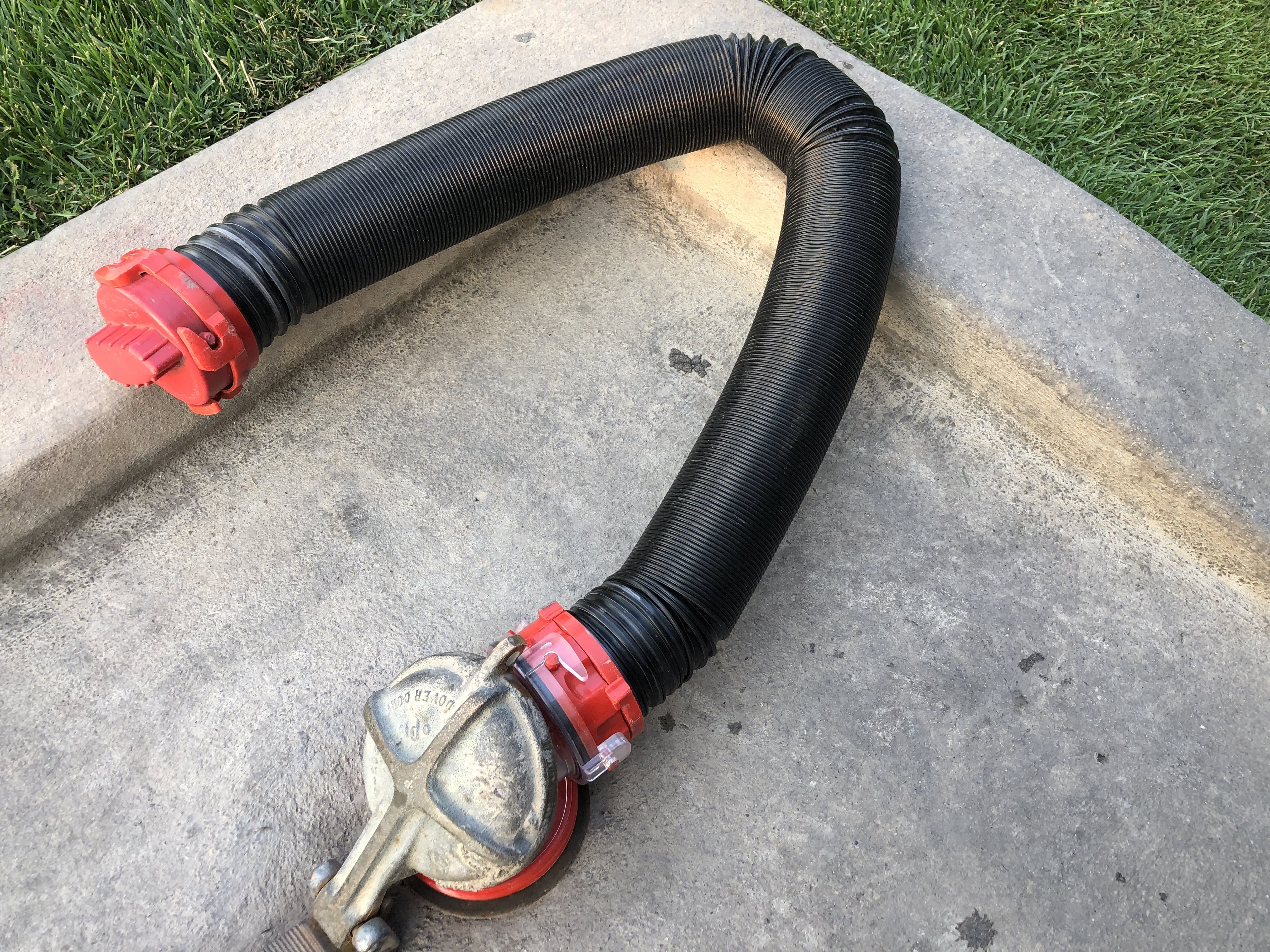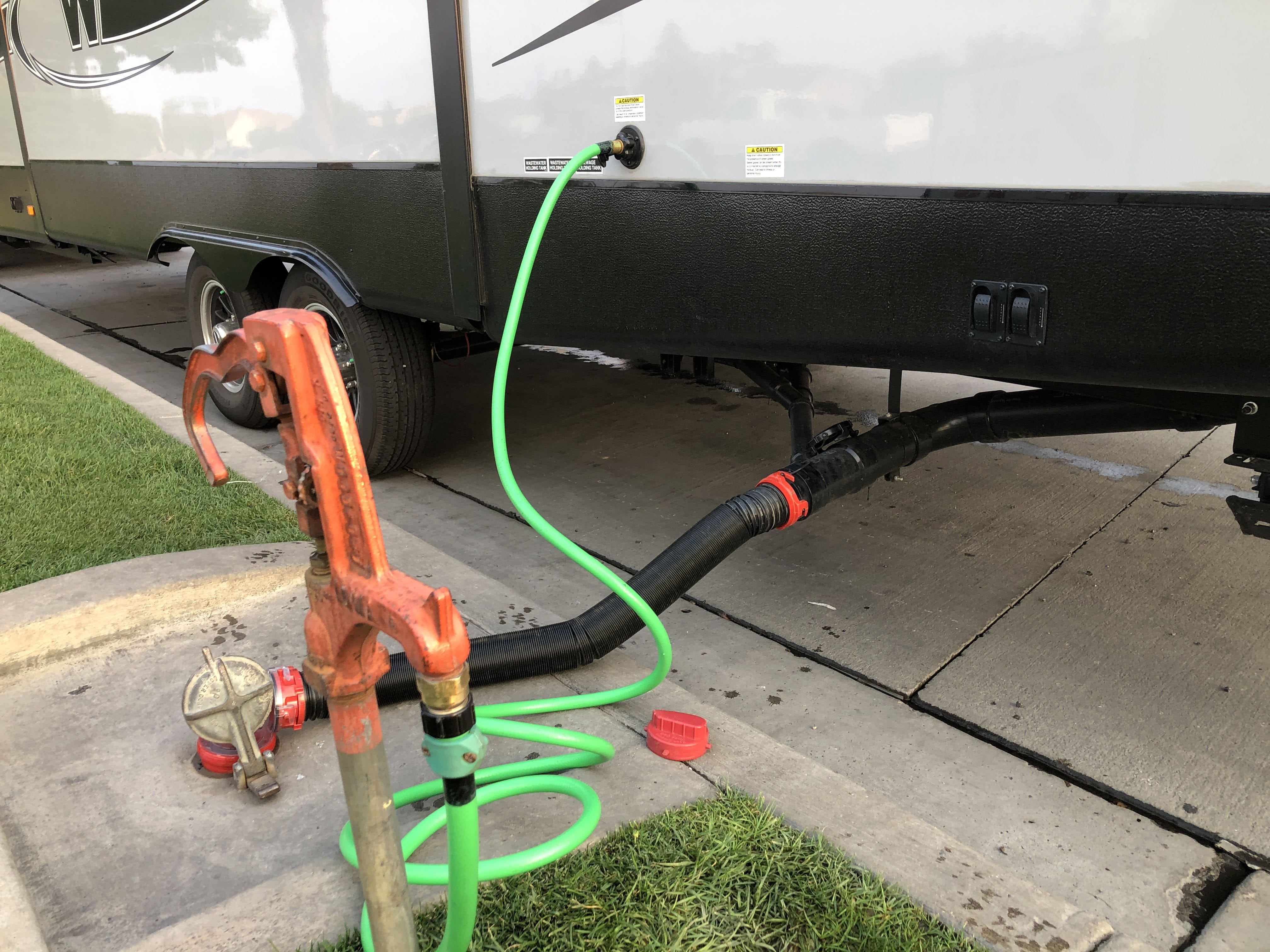
Dumping The Tanks
Let’s face it, dumping the tanks is not the most glamorous part of RVing but it is something that we all have to do. For as much as people don’t like to talk about the process the topic that comes up frequently. In this post, we are going to talk about some of the things that we do and find work well for us when we have to do the dump.

Wear Gloves
A while back we saw a setup on Pinterest where somebody had attached a box of gloves to the storage compartment door. We have gone through a few iterations but have had really good success with the setup we have now. The gloves give you a bit of extra protection in case something goes wrong. In addition, you are handling components that might not be exactly clean so, we fell it is best to glove up before doing anything. It was also helpful for us to understand how to properly remove the gloves once done. We use a method very similar to the one in this video.

Dedicated Bin
All of our dump related supplies are stored in a dedicated bin in our pass-through storage. The only exceptions are the actually dump hoses (we store two 10-foot sections in the bumper) and the rubber gloves. The items that we keep in our dump bin are:
Valterra 90 degree universal sewer adapter (clear)- Dedicated garden hose for rinsing and black tank flush
- Valterra S1000 Black 10′ Slunky Hose Support (used at some sites)
- Valterra T58 Twist-On Waste Valve (just for emergencies)
- Prime Products 170115 Johnny Chock (can help with maintenance)

Connecting the Hose – Drain side First
We first install the universal fitting in the drain in the ground and then we connect the dump hose to the fitting before connecting to the rig. The thought here is that when you connect to the rig you are ready for stuff to start coming out. Occasionally there might be a small drip and you can easily catch it without any fear of anything coming out the other side of the hose. With it securely in the ground, we will verify that our blade valves are closed and then we slowly remove the dump cap. While we are removing the cap on our rig, we hold the hose directly below it to catch anything that comes out. If everything is working properly this should only be a drip or two at most. We then connect the host to rig and visually verify that we have all fully seated it and all of the tabs are properly captured at all connection points. This is a very important step because if you miss one you will have a bit of a mess on your hands.

Start the Dump – Gray Tank First
Yes, I said GRAY TANK FIRST! Almost 100% of advice you will receive says to dump the black tank first, however, we do it differently. I personally would much rather find out there is a problem with my gray water vs my black water. So we always pull the gray first and let it run for a few seconds to verify everything is going where we intend it to. Then we close the gray and open the black. While the black is draining we connect our dedicated garden hose to our tank rinser port. Once the back is finished we close it off and open back up the gray and let it finish draining. In our rig, we have two gray tanks so while the first one is emptying we are usually running a tank rinse on the black tank. By the time the gray has finished, there is usually a good amount of water in the black and we will drain that again. Once we are happy with the results, we will move on to dumping the final gray tank. While that tank is draining, we add a bit of water to the black tank using the tank rinser, and then we disconnect the garden hose from the rig. When all the tanks are done we disconnect the host from the rig and use the garden hose to rinse out the dump hose. From there we shake the hose to try and get as much water out as we can and then we disconnect it from the ground and put it back in storage. We then put everything away in the dedicated bin and head off towards our next adventure.
ÏF